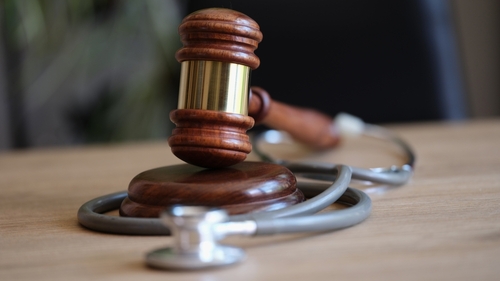A personal injury case is a legal dispute that arises when one person suffers harm from an accident or injury, and someone else could potentially be responsible for that harm from a legal standpoint. Personal injury cases are civil lawsuits filed in court to seek compensation for the losses suffered by the injured party due to another’s negligence or intentional misconduct. Injured parties may include individuals, businesses, government entities, and other organizations.
Settling a Minnesota Personal Injury Case
The most common types of personal injury claims involve motor vehicle accidents, medical malpractice, premises liability (slip & fall), product liability (defective products), and wrongful death cases. To prove a personal injury claim requires evidence that shows the defendant was negligent or acted intentionally in causing the plaintiff’s injuries. The amount of damages sought depends on factors such as severity of the injuries sustained and whether any permanent disability resulted from them.
The Personal Injury Settlement Process in Minnesota
Unfortunately, the personal injury settlement process in Minnesota can be long and complicated. It is important to understand the steps involved so that you can make informed decisions about your case.
Pre-litigation is the first step of the process, which involves gathering evidence, consulting with experts, and negotiating with insurance companies or other parties involved in the accident. Filing a lawsuit is usually necessary if an agreement cannot be reached during pre-litigation negotiations.
Once a lawsuit has been filed, discovery begins. During this phase both sides will exchange information such as medical records, witness statements, photographs of property damage or injuries sustained in the accident etc., to help build their cases for trial. Negotiations may also take place at this time between attorneys representing each side to try and reach an out-of-court settlement before going to trial.
The Average Length of a Personal Injury Settlement in Minnesota
The average length of a settlement is typically between six months and two years, but this timeline may be shorter or longer depending on the specifics of each case.
The amount of time needed for a settlement to be reached depends largely on how quickly both parties can come to an agreement. If both sides agree early on, then the process will likely move faster than if there is disagreement about certain issues. Additionally, if either side decides to take legal action against the other party, this could also extend the timeline significantly as court proceedings must take place before any resolution can be reached.
Other factors include:
- Whether liability has been established. If one party believes they are not at fault for causing an accident or injury, then they may dispute their responsibility and delay reaching an agreement until liability has been determined by either negotiation or litigation.
- Insurance coverage limits and deductibles from both parties involved in the claim. For example, if one party’s insurance coverage limit does not cover all damages incurred by another person due to their negligence then negotiations must occur between insurers which can add additional time onto already lengthy timelines associated with settling claims out-of-court.
- Medical treatment costs related to injuries sustained from an accident. Payments cannot be made until all medical bills have been paid off and/or resolved through negotiation with healthcare providers such as hospitals and doctor’s offices involved with treating patients injured during accidents caused by someone else’s negligence or recklessness.
Variables That Can Affect the Settlement Timeline
When it comes to personal injury cases, the settlement timeline can vary greatly. The length of time it takes for a case to settle depends on several things, including:
- The Severity of the Injury – In general, more severe injuries take longer to resolve than less serious ones since there are often multiple medical bills associated with more serious injuries that need to be considered when determining an appropriate settlement amount. Additionally, if there is a permanent disability or long-term care required as a result of an accident, this will also tack on additional time due to negotiations regarding compensation for these costs.
- Complexity of the Case – Cases involving complex legal issues such as product liability or medical malpractice may take longer than other types of personal injury cases due to their intricate nature and the extensive research required to build a strong argument for either side. It is important that both sides have enough information before they can come up with an agreement on how much should be paid out in damages. This could potentially add extra months onto your timeline depending on how complicated your case is.
- Cooperation of Parties Involved – If all parties involved are willing and able to cooperate throughout the process, this can help expedite the process since everyone will have access to all relevant information, which makes coming up with a fair resolution easier and faster overall. If one party refuses or delays providing necessary documents or fails to show up at meetings, however, this could cause delays which would extend the timeline considerably.
Having adequate evidence available is essential when pursuing any legal action, but especially in personal injury cases where you must demonstrate that negligence was present. Without the proper documentation proving fault, it can become difficult for either side to reach an agreement, which can add weeks – or even months – onto your timeline, depending on how difficult it is to find proof that supports your claim(s).
Unfortunately, courts often experience heavy backlogs due to the large number of cases filed each year, making it difficult for them to move through their dockets efficiently. This can result in extended wait times while waiting for trial dates and hearing dates, meaning some claims may not be heard until a much later date.
How to Speed Up the Settlement Process
When you are injured in an accident, the settlement process can seem like a long and daunting task. However, there are steps that you can take to speed up the process and ensure that your case is resolved as quickly as possible.
- Gather & Preserve Evidence – Gathering evidence related to the accident is essential for building a strong legal case. This includes taking pictures of any property damage or injuries sustained, obtaining witness statements, and keeping copies of medical records and police reports, all of which will help prove liability in court if necessary. Additionally, it’s important to preserve this evidence by storing it in a safe place where it won’t be damaged or destroyed over time.
- Be Cooperative with the Insurance Company – It’s important to remember that insurance companies want their customers’ claims settled quickly so they don’t have to pay out more money than necessary. By the same token, however, they also need enough informa tion from claimants before they can make a decision about how much compensation should be paid out. Promptly provide them with all requested documents and answer questions honestly as it relates to certain aspects of your claim.
- Hire an Experienced Minnesota Personal Injury Lawyer – One of the most important things you can do to expedite your personal injury settlement is to hire an experienced attorney who understands Minnesota’s laws and has experience dealing with insurance companies. An experienced Minnesota personal injury lawyer will be able to negotiate on your behalf and help make sure that all paperwork is filed correctly so that your case moves forward without any delays.
Following these tips may not guarantee success but certainly increases the chances for a faster resolution when filing personal injury cases in the Minnesota legal system, ultimately leading to quicker settlements for those involved.
Conclusion
It is important to understand the factors that affect the timeline of a settlement, as well as the average length of settlements in Minnesota. By working with an experienced Minnesota personal injury lawyer, you can ensure that your case is handled efficiently and effectively so that you receive fair compensation for your injuries. With their help, you can navigate the legal system and expedite the process of settling your claim.




